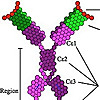
Allergy Notes - Dr. Dimov
480 FOLLOWERS
Allergy, Asthma and Immunology News Updated Daily by Board-certified Allergists and Assistant Professors at University of Chicago and NSU.
Allergy Notes - Dr. Dimov
2w ago
Hormonal Influences:
Obesity and asthma share hormonal links, with hormones like sex hormones, incretins, and thyroid hormones potentially influencing asthma severity. Hormonal imbalances can exacerbate asthma symptoms, highlighting a common comorbidity pattern.
Obesity-Related Comorbidities Impacting Asthma:
Gastroesophageal Reflux Disease (GERD): Known to aggravate asthma by causing acid reflux into the lungs.
Obstructive Sleep Apnea (OSA): Can lead to nocturnal asthma exacerbations due to airway obstruction during sleep.
Metabolic Syndrome: Encompassing insulin resistance, dyslipidemia, h ..read more
Allergy Notes - Dr. Dimov
2w ago
Asthma is not a singular condition but a chronic, heterogeneous airway disease often accompanied by various comorbidities. Over two decades ago, the term "one airway, one disease" was introduced to highlight the link between asthma and upper airway conditions.
Types of Upper Airway Comorbidities:
- Allergic Rhinitis
- Non-Allergic Rhinitis
- Mixed Rhinitis
- Chronic Sinusitis (with or without nasal polyps)
- Aspirin or Non-Steroidal Anti-Inflammatory Drug-Exacerbated Respiratory Disease
Impact of Upper Airway Comorbidities on Asthma:
Upper airway conditions can exacerbate asthma by increasin ..read more
Allergy Notes - Dr. Dimov
2w ago
FDA Approval and Usage:
Tapinarof, marketed under the brand name Vtama, has been approved for the treatment of atopic dermatitis in adults and children over the age of 2.
Mechanism of Action:
Type and Application: Tapinarof is formulated as a cream and serves as a topical aryl hydrocarbon receptor agonist (AhR).
Biological Effect: When applied, Tapinarof binds to the aryl hydrocarbon receptor, activating it. This activation results in the downregulation of pro-inflammatory cytokines like IL-17, thereby reducing inflammation associated with atopic dermatitis.
Atopic dermatitis maintenan ..read more
Allergy Notes - Dr. Dimov
1M ago
That's a very common question in an allergy clinic. We often see patients, often in their 70s, who report having profuse rhinorrhea (runny nose) when they eat specific foods. Very often these are hot foods such as hot soup or spicy foods, for example, Thai food, or it could be any food. Some patients even report symptoms with pasta sauce. The symptoms of rhinorrhea with food consumption are called gustatory rhinitis.
Treatment Options for
Non-Allergic Rhinitis (NAR) (click to enlarge the image).
Diagnostic Challenges
Testing Limitations
Most of the patients we see would like to be test ..read more
Allergy Notes - Dr. Dimov
3M ago
The landscape of atopic dermatitis (AD) treatment has seen significant advancements in recent years. The most recent approval of a new therapy is Lebrikizumab (Ebglyss), a new biologic therapy, administered as a 250 mg subcutaneous injection once a month after an initial buildup period. Lebrikizumab targets interleukin-13 (IL-13), a key cytokine involved in the inflammatory process of AD.
Mechanism of Action
Lebrikizumab is an anti-IL-13 monoclonal antibody designed to specifically inhibit the activity of IL-13. This cytokine plays a crucial role in the pathogenesis of atopic dermatitis by pro ..read more
Allergy Notes - Dr. Dimov
2y ago
As of January 2023, AIRSUPRA (albuterol/budesonide), has been approved in the US for the as-needed treatment or prevention of bronchoconstriction and to reduce the risk of exacerbations in people with asthma aged 18 years and older.
AIRSUPRA (180mcg albuterol/160mcg budesonide) significantly reduced the risk of severe exacerbations compared to albuterol in patients with moderate to severe asthma when used as an as-needed rescue medication in response to symptoms.
Albuterol rescue inhalers available prior to 2023 can alleviate acute symptoms, but do not treat the underlying inflammation in as ..read more
Allergy Notes - Dr. Dimov
2y ago
Allergic rhinitis was associated with a broad range of sleep problems and to a lesser extent in children with asthma and least in children with eczema.
Allergic rhinitis was associated with:
- sleep routine problems
- morning tiredness
- night arousals
- sleep disordered breathing
- restless sleep
Asthma was associated with:
- sleep routine problems
- sleep disordered breathing
- restless sleep
Eczema was associated with restless sleep.
The association between allergic disease and psychological distress was mediated through sleep problems.
References:
https://www.annallergy.org/article ..read more
Allergy Notes - Dr. Dimov
2y ago
Stevens-Johnson syndrome/toxic epidermal necrolysis (SJS/TEN) is a severe cutaneous adverse reaction to drugs. The disease carries considerable morbidity and mortality.
Immunomodulators for SJS/TEN such as systemic corticosteroids and intravenous immunoglobulin (IVIG) have been widely used in clinical practice.
Emerging evidence suggested that tumor necrosis factor-α antagonists on SJS/TEN may help.
This restrospective review found that add-in of etanercept at the time of initiating conventional therapy could be a superior option to:
- accelerate disease recovery
- reduce the high dose and ..read more
Allergy Notes - Dr. Dimov
2y ago
The article argues against the hygiene hypothesis for causation of allergic diseases:
https://www.annallergy.org/article/S1081-1206(22)00585-3/fulltext
The authors make the case that the basic changes in hygiene, clean water, complete separation of fecal matter from food production, and helminth eradication were complete before most of the major rises in allergic disease. Thus, all the allergic diseases increase occurred “post-hygiene.”
The look for another cause: There is one major change that has decreased the severity of 2 allergic diseases, that is air conditioning and the closing of hou ..read more
Allergy Notes - Dr. Dimov
2y ago
Atopic dermatitis (AD) is the most common chronic inflammatory skin disease. AD can be very challenging to manage.
AD is characterized by:
- dense cutaneous dendritic cell and T-cell infiltrates
- increased inflammatory mediators in affected tissues
- barrier defects secondary to the downregulation of differentiation proteins and lipids
AD is associated with a polarized type 2 immune axis.
However, AD is not a homogenous disease. AD may be categorized into multiple clinical phenotypes depending on the underlying molecular signature (endotype).
Read more in JACI here:
https://www.jacionlin ..read more